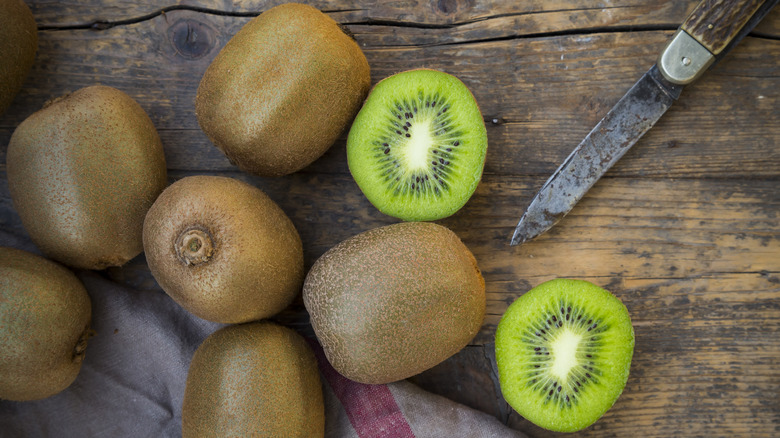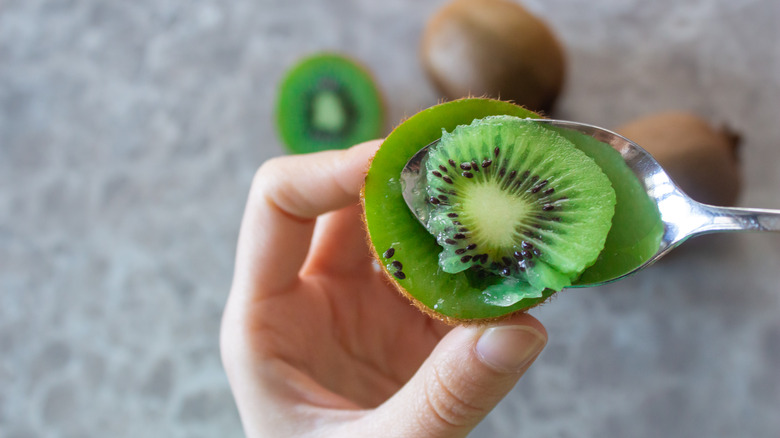The Smell Test For Identifying Ripe Kiwi
Ripe kiwis are delicious, with banana-like sweetness balanced by strawberry-like tartness. They're also versatile — they're great snacks by themselves and just as tasty in everything from smoothies to a marinade for chicken or a honey lime-dressed fruit salad. But, how do you know when they are in fact ripe? Sneaky kiwis have that brown, fuzzy skin that masks the telltale ripeness signs we can see in other fruits, like changing colors.
When you're shopping for kiwis — their peak season is late fall to early spring — it's a game-changer to know one simple ripeness test: the smell. It might seem strange to give a kiwi a sniff in the grocery store, but it's such a simple and effective hack. If the kiwi smells lovely and sweet, it's ripe. If it's got no smell at all, it's not. To get the best sense for this, smell the kiwi where it would have been connected to the vine.
The reason kiwis — and other fruits — develop a pleasant smell as they ripen comes down to hormones and enzymes. The hormone ethylene kicks off the ripening process, which introduces enzymes: Amylase starts turning starches into sugars, making the fruit sweet, and pectinase makes fruits softer because it breaks down pectin, which keeps fruits hard. Kiwis are what's known as climacteric, meaning they continue to ripen after they've been picked. So, right there in the produce aisle, all of this is at work as kiwis ripen, making them softer and sweeter.
Other ways to tell if kiwis are ripe
The smell test is effortless and reliable when it comes to making sure you're grabbing ripe kiwis, but there are a couple of other methods if you want to be triple-sure. In addition to developing that sweet smell, ripe kiwis are also softer — again, due to that pectinase at work. So, you can give kiwis a gentle squeeze to see if they're still super firm — not ripe — or have a bit of give — ripe. Also, you can look for kiwis that are nice and round, as they tend to plump a bit as they reach optimal ripeness.
Of course, these are all the tests you can do in the store, but once you get your kiwis home, you can do more to ascertain how ripe they are. When you cut into the fruit, the flesh should be bright green (or yellow since there are several different types of kiwi), and the seeds should be black. Unripe kiwi seeds are green or yellowish. You'll naturally be able to taste the difference, too, since ripe kiwis will have all that sweetness and tartness while unripe kiwis will be harder and not taste like much at all.
Should you realize you bought unripe kiwis and want to speed up the ripening process, you can place them in a paper bag alongside an apple or a banana. The additional fruit will actually give off ethylene, catalyzing kiwis' ripening.

